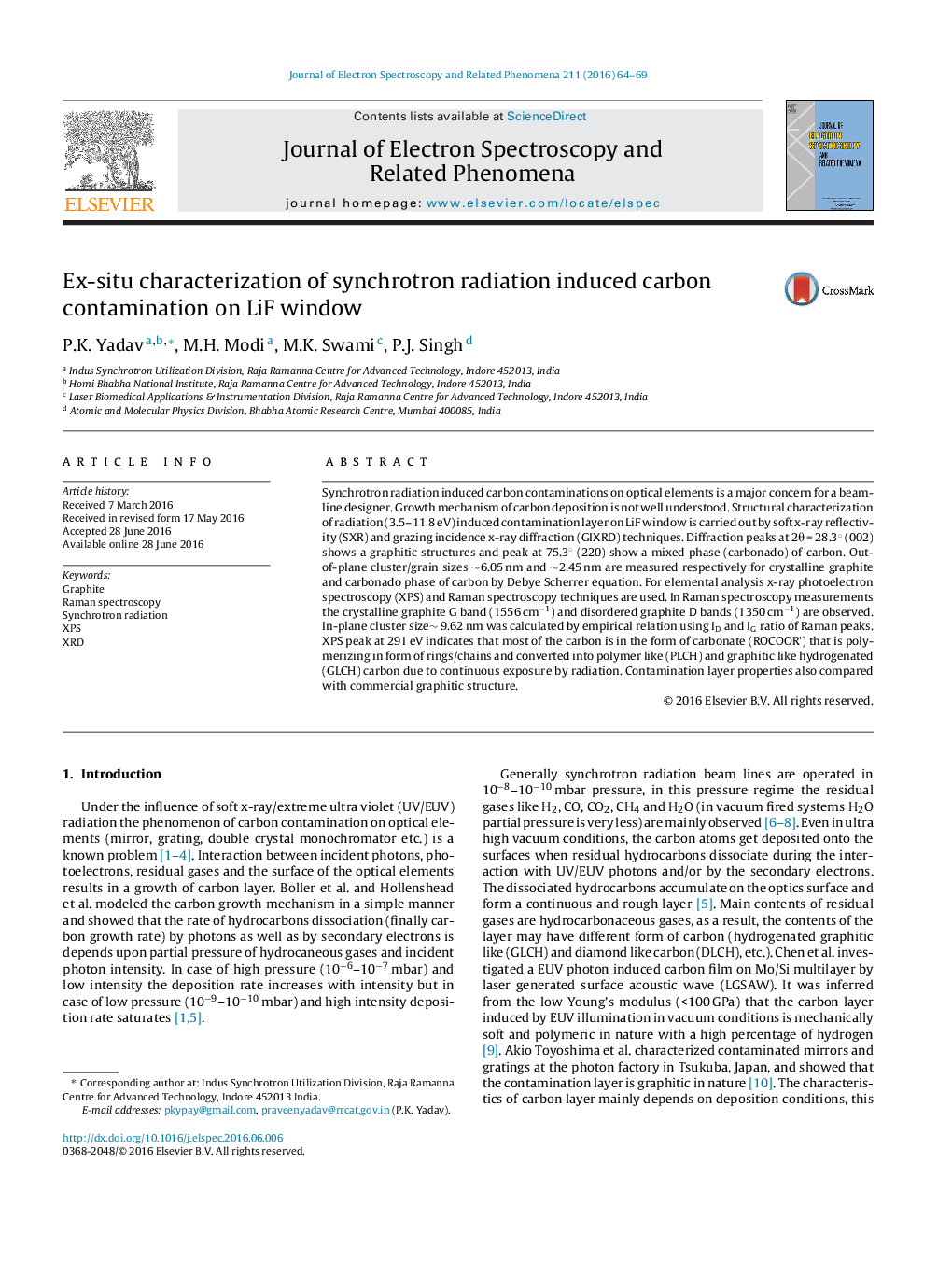| Article ID | Journal | Published Year | Pages | File Type |
|---|---|---|---|---|
| 5395550 | Journal of Electron Spectroscopy and Related Phenomena | 2016 | 6 Pages |
Abstract
Synchrotron radiation induced carbon contaminations on optical elements is a major concern for a beamline designer. Growth mechanism of carbon deposition is not well understood. Structural characterization of radiation (3.5-11.8 eV) induced contamination layer on LiF window is carried out by soft x-ray reflectivity (SXR) and grazing incidence x-ray diffraction (GIXRD) techniques. Diffraction peaks at 2θ = 28.3° (002) shows a graphitic structures and peak at 75.3° (220) show a mixed phase (carbonado) of carbon. Out-of-plane cluster/grain sizes â¼6.05 nm and â¼2.45 nm are measured respectively for crystalline graphite and carbonado phase of carbon by Debye Scherrer equation. For elemental analysis x-ray photoelectron spectroscopy (XPS) and Raman spectroscopy techniques are used. In Raman spectroscopy measurements the crystalline graphite G band (1556 cmâ1) and disordered graphite D bands (1350 cmâ1) are observed. In-plane cluster sizeâ¼ 9.62 nm was calculated by empirical relation using ID and IG ratio of Raman peaks. XPS peak at 291 eV indicates that most of the carbon is in the form of carbonate (ROCOOR') that is polymerizing in form of rings/chains and converted into polymer like (PLCH) and graphitic like hydrogenated (GLCH) carbon due to continuous exposure by radiation. Contamination layer properties also compared with commercial graphitic structure.
Related Topics
Physical Sciences and Engineering
Chemistry
Physical and Theoretical Chemistry
Authors
P.K. Yadav, M.H. Modi, M.K. Swami, P.J. Singh,
